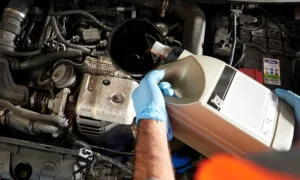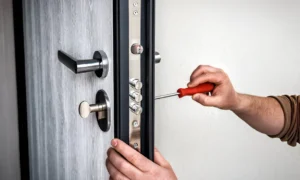Emergencies, be they natural disasters like hurricanes, earthquakes, or floods, or human-made crises such as power grid failures or pandemics, can occur at any time. These unexpected events have the capacity to utterly derail our daily routines, cutting us off from basic essentials and services. For example, after a natural disaster, power outages can persist for days or weeks, stores might exhaust essential supplies, and communication channels can be seriously impaired. That’s why preparing for emergencies isn’t merely a wise decision; it’s an essential requirement. It can determine whether we endure the crisis relatively smoothly or encounter extreme difficulties.
Step 1: Assess Your Needs
The initial step in emergency preparedness involves evaluating your family’s unique requirements. Power is a critical factor. When there’s no power, refrigerators cease to function, causing food to rot, and electrically-dependent medical devices may break down. Regarding food, you must determine your family’s daily consumption and stock up on non-perishable goods that can sustain you for at least a few days. Water is of equal importance, as the human body can’t survive for long without it. Strive to have at least one gallon of water per person per day. Moreover, medical supplies like bandages, antiseptics, and any essential prescription drugs should be included in your assessment.
Step 2: Choose a Reliable Power Source
When it comes to power sources during emergencies, solar generators stand out as an ideal option. They are clean, as they produce no harmful emissions, sustainable since they rely on the sun’s energy, and highly reliable. A great example is the Bluetti Elite200 v2. This solar generator features a capacity of 2073Wh, which can store a significant amount of energy. With a 2600W output and 9 outlets, it has the versatility to power multiple appliances simultaneously. Whether it’s running a refrigerator to keep food fresh or charging various electronic devices, the high capacity of the Bluetti Elite200 v2 ensures that you have power when you need it most. It can serve as an excellent home battery backup, providing a reliable source of electricity during extended power outages.
Step 3: Stock Up on Essentials
Emergency preparedness essentially involves stocking up on food, water, and medical supplies. When it comes to food, prioritize non-perishable items such as canned goods, dried fruits, and nuts. Their long shelf life enables them to offer essential nutrients. Store water in clean, sealed containers. Additionally, you might think about having a water purification system for extra protection. Regarding medical supplies, basic first-aid items like gauze, adhesive tape, and pain relievers should be included. If any family member has particular medical conditions, ensure there’s an ample supply of their prescribed medications.
Step 4: Create a Communication Plan
During an emergency, communication is key. I remember a time when there was a severe storm in my area. It was really scary, and that’s when I truly understood how crucial it is to have a proper communication plan. Establish a communication plan with your family members. Decide on a central meeting point in case you get separated. Provide each family member with a list of important phone numbers, including emergency services, relatives, and neighbors. Consider having a battery-powered radio to stay informed about the situation, as cell phone networks may be overloaded or unavailable during an emergency. Also, apps that work offline for communication can be a great addition to your plan.
Step 5: Learn Basic First Aid
Possessing basic first-aid skills can save lives in a medical emergency. Enroll in a first-aid course either at your local community center or online. Discover how to handle cuts, burns, and minor injuries. Get well-versed in CPR techniques for a cardiac emergency. Having such knowledge available can greatly impact the outcome of an emergency.
Step 6: Secure Your Home
Emergency preparedness importantly includes safeguarding your home from storms and possible break-ins. To prevent damage during high-wind situations, install storm shutters on windows. Secure any loose items in your yard, as they could turn into dangerous projectiles during a storm. Strengthen doors and windows to ward off burglars, particularly if you’ll be away from home during an emergency or when there’s civil unrest.
Step 7: Build an Emergency Kit
Your emergency kit is your lifeline during tough times. It should be comprehensive, and a solar generator like the BLUETTI AC300 + B300K is a must-have. It’s not just a home backup power; it’s a guarantee that you can keep your essential devices and appliances running when the power goes out. Along with this amazing generator, fill your kit with practical items: flashlights to cut through the dark, extra batteries to keep them shining, a multi-tool for any repair needs, and a first-aid kit to tend to minor injuries. Don’t forget to add warm clothing, blankets to stay cozy, and personal hygiene products to maintain your well-being. I once had to rely on my emergency kit during a small power outage, and I was so glad I had everything I needed.
Step 8: Practice Your Plan
Regularly practicing your emergency plan with your family is crucial. Just like how I always feel a sense of security when my family and I have a clear plan for various situations, you too can achieve this. Conduct drills to simulate different emergency scenarios, such as a fire or a power outage. This helps everyone in the family know what to do in a real-life situation. It also allows you to identify any flaws in your plan and make necessary adjustments.
Step 9: Stay Informed
Stay informed about weather conditions and news updates. Follow local news channels, weather apps, and official emergency management websites. Being aware of potential threats in advance gives you more time to prepare. In case of an approaching storm, for example, you can take preemptive measures like securing your home and stocking up on extra supplies.
Step 10: Review and Update Your Plan
As your family’s needs change over time, it’s important to review and update your emergency plan. If you have a new family member, for instance, you need to adjust your food and medical supply calculations. Also, technological advancements may offer better options for power sources or communication. Regularly check the expiration dates of items in your emergency kit and replace them as needed.
Conclusion
To sum up, emergency preparedness is an ongoing process, and commencing today is the optimal approach to guarantee the safety and welfare of your family. A solar generator, like those previously mentioned, is a vital element of any emergency plan. It functions as a dependable backup power source and a key part of your home battery backup system. By adhering to these 10 steps, you can be more ready to confront any emergencies that might arise. Don’t delay until it’s too late; act now to protect your family and home.
Read More From Techbullion



































